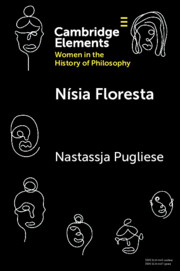Element contents
Nísia Floresta
Published online by Cambridge University Press: 16 June 2023
Summary
- Type
- Element
- Information
- Online ISBN: 9781009127219Publisher: Cambridge University PressPrint publication: 20 July 2023
Bibliography
Primary Sources
Secondary Sources
- 2
- Cited by



